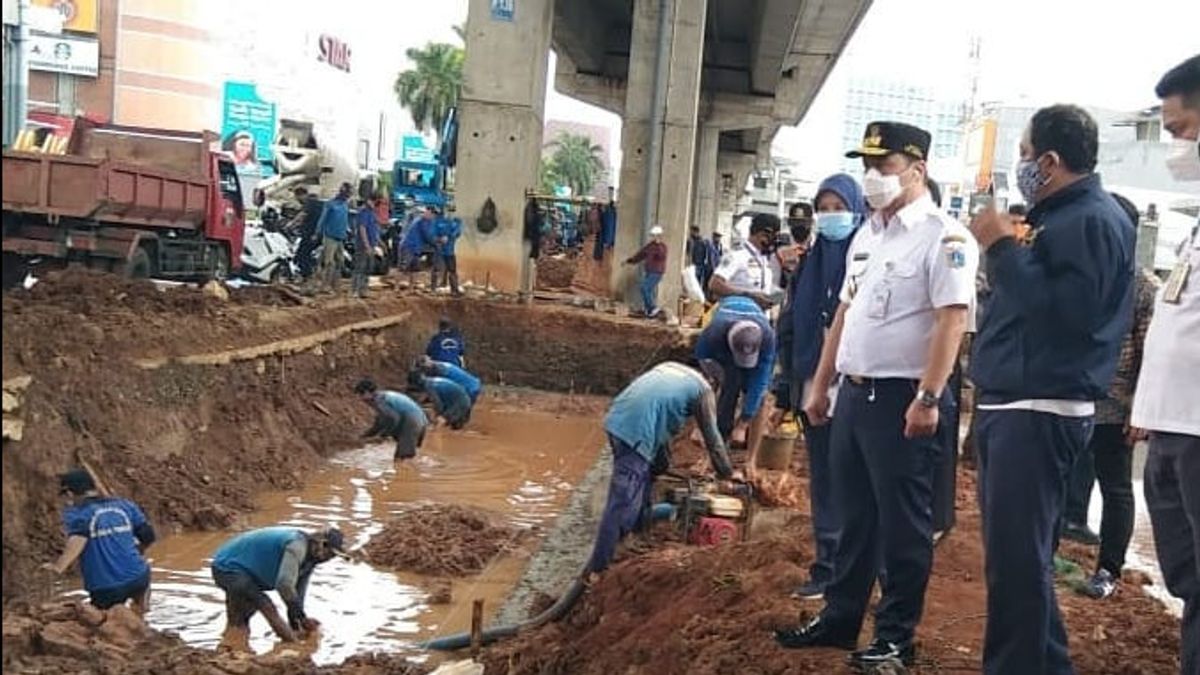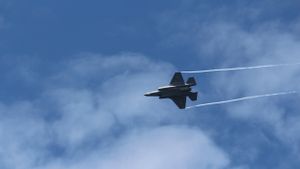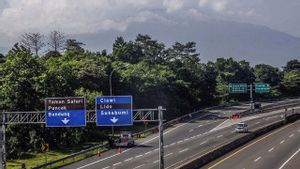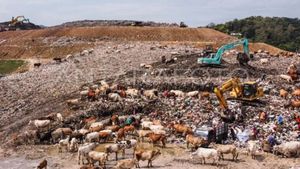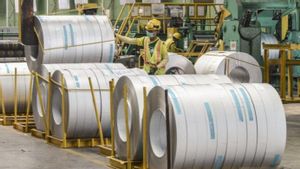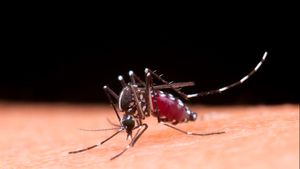JAKARTA - Secretary of the Department of Water Resources (SDA) Dudi Gardesi explained that his party has five programs to anticipate the impact of flooding in the rainy season.
"There are at least five programs carried out, namely Gerebek Lumpur, vertical drainage (infiltration wells), pump maintenance, tidal flood management through NCICD, and polder system management," said Dudi in a virtual discussion, Thursday, January 28.
Gerebek Lumpur, said Dudi, is the dredging or draining of mud from rivers, rivers and reservoirs. Thus, the water capacity in the rainy season is maximized.
In 2020, 23 reservoirs have been dredged, with a dredging volume of 446,402.9 m3. Then, for river dredging, a total of 93 locations, with a dredging volume of 279,967.5 m3.
Meanwhile, 390 channels have been dredged, with a dredging volume of 121,002.6 m3. "That's for 2020, yes, in previous years, dredging has also been carried out in other locations," he said.
While the infiltration well program is carried out by the DKI Provincial Government with related elements in the region and involving the community.
As of December 31, 2020, there have been 2,974 vertical drainage points in 777 locations, such as in RPTRA, Regional Government Buildings, Schools, City Parks, and Mosques. The infiltration wells constructed until the end of 2020 have not reached the target of 5,000 points.
Then, for the handling of tidal floods through NCICD, the DKI Jakarta SDA Office has determined the priority locations for the construction of coastal embankments, namely Kamal Muara, Blencong River, Kali Adem-Muara Angke, Muara Beach, Sunda Kelapa, and Tanjung Priok.
"Currently, 12.6 km of coastal embankments have been built and the construction will continue," he said.
Furthermore, the DKI Provincial Government will build and rehabilitate the polder during 2021-2022. The areas are in Kelapa Gading, Pulo Gadung, Cakung-Cilincing, Makassar, Cipayung, Penjaringan, Pademangan, and Kembangan-Kedoya.
In addition, Dudi admitted that his party continues to maintain pumps. Currently, there are 487 stationary pumps in 178 locations, as well as 175 mobile pumps in 5 regions.
The English, Chinese, Japanese, Arabic, and French versions are automatically generated by the AI. So there may still be inaccuracies in translating, please always see Indonesian as our main language. (system supported by DigitalSiber.id)
